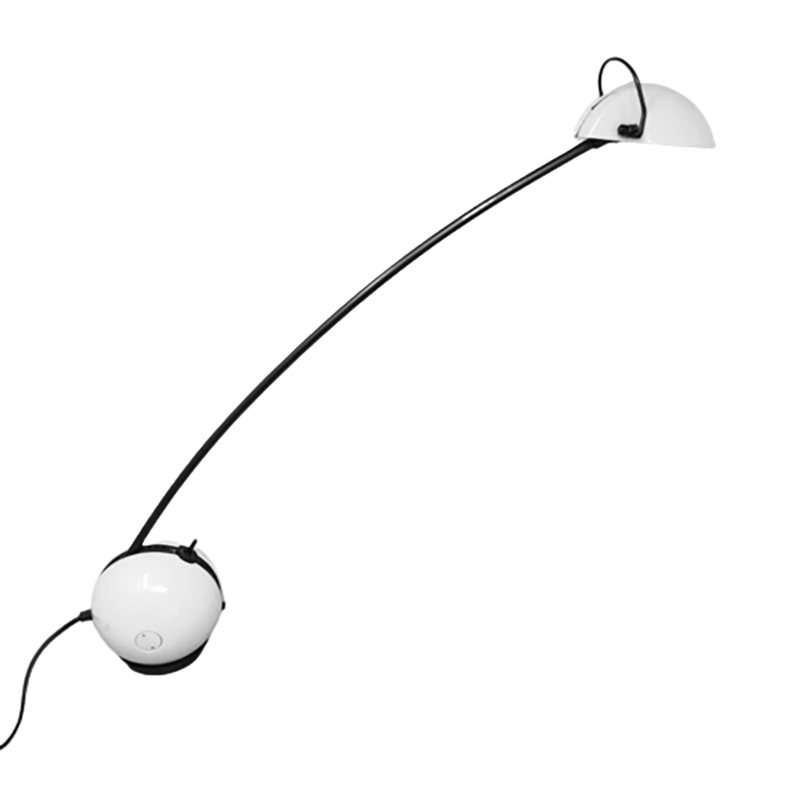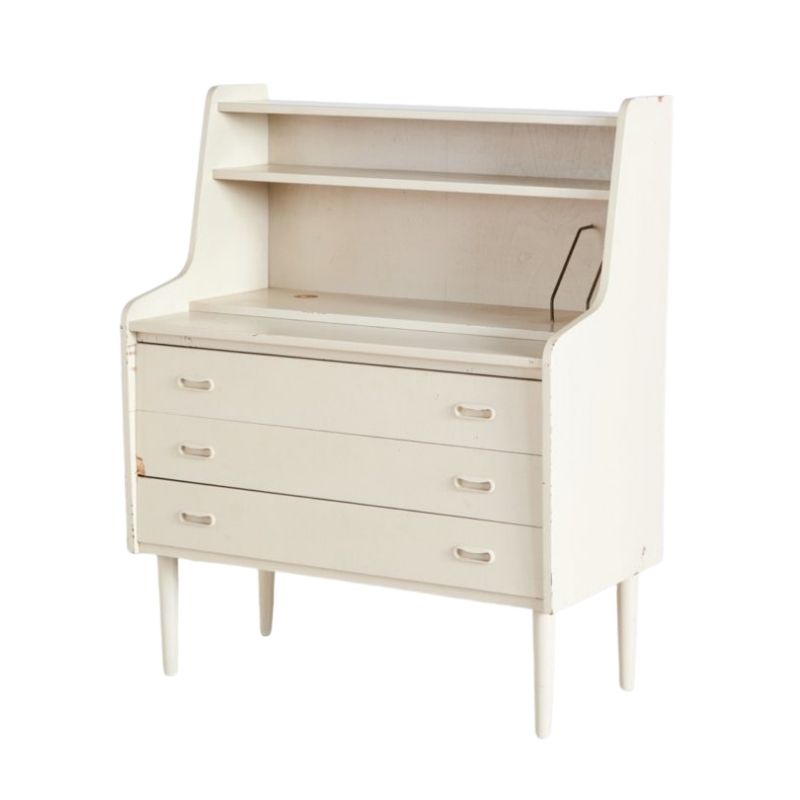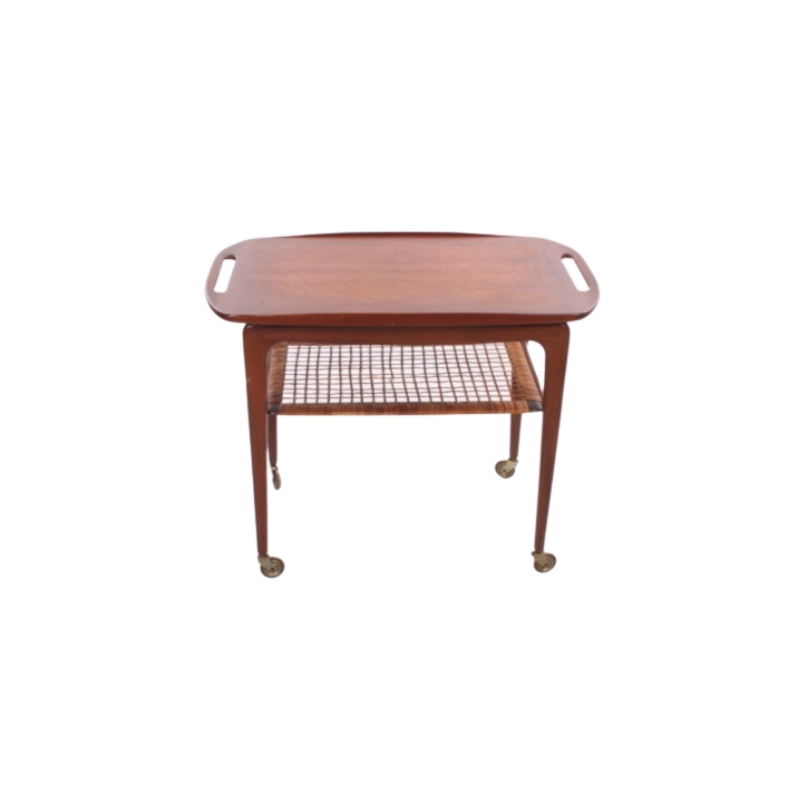Just use it, let it get a...
Just use it, let it get a little dusty, and don't worry about it.
Sunlight destroys every thing it touches (eventually) but that's no reason to tinfoil over the windows.
Maple slats aren't going to be changed by any perceivable degree.
If you had a new, natural finish panel of cherry, however, that you had a book or lamp or something on for a year with some sun exposure in the same spot you would absolutely see a difference. Natural cherry darkens quite a bit in the first while. Table leaves stored in a dark closet will look funny compared to the rest of the table after a while too. Conditions cause change/relative lack of change.
It's my intent to use it......
It's my intent to use it... I... just... you know how it feels when something's new and you're freaking out analyzing every detail! haha.
But on a serious note, something that might be a more legitimate concern - what about having it placed over a floor vent? Will the heat cause the wood to dry or the glue to separate?
I think you'd find that freshly-cut maple
will darken dramatically in relatively short order when exposed to strong UV and most woods will. Most finishes yellow somewhat over time as well. I've seen unfinished sugar maple on antiques as dark as chocolate from oxidization alone.
If you want and even tone, keeping items on top long-term is not advised. A sunny location and periodic end-for-end or front-to-back rotation will accelerate the effect.
We have to
remember that there are two issues at play, namely change in color of finish material, and change in color of wood.
In my experience, cherry, Douglas Fir, and walnut (among others) are prone to changes in color; the first two tend to darken fairly quickly, while walnut can fade alarmingly.
These are changes (caused by UV, or other components of sunlight) in the surface of the wood itself. Finishes which yellow also react to UV, as I understand it -- or is it just aging/exposure to atmosphere ?
Traditional clear finish materials are a bit yellow to start with, of course. The newer water-borne polyurethanes seem more water-clear ("water-white"?) from day one, and may also be less prone to yellowing.
UV-resistent finishes (so-called) may resist yellowing of the finish -- but are they also supposed to protect the wood from changing color ? I'd be skeptical . . .
Windows or skylights which directly light a wooden surface will most quickly darken those surfaces -- but ambient daylight will work them as well, if more slowly.
In my experience, maple would be minimally prone to "suntan" -- to darken generally, or selectively depending on shading. But it never hurts to expose wood evenly to light, by (for instance) moving regularly any objects placed on it.The best treatment for table leaves would be for them to remain in use on the table, permanently ! But we don't expect to see that . . .
As to heat and moisture -- wood doesn't like either, in excess. Modern glues will not be affected, but the wood will swell and shrink depending on exposure to either, which can (at the least) cause failures in finish materials and to adhesives which are often not as flexible as the wood is. Wetted wood should be dried promptly; wood should be exposed to changes in temperature and humidity gradually if at all.
Perhaps there's
a constant in play, here -- lighter woods becoming darker, while dark woods (walnut) become lighter ? But I don't think it's a simple as that.
I'm sorry to have to contradict longtime listener/well-known caller Woodywood, but certain woods, including cherry and fir, will consistently darken -- in a matter of hours -- when exposed to sunlight. So there's no single effect in . . . effect.
The unknowns, as I see it, include: Which species bleach, and which ones darken, when exposed to a) sunlight, b) other illumination, and/or c) atmosphere -- in a raw state. Which finishes darken or yellow over time, and under what circumstances ? What combinations of specie and finish result in change of color or value (light/dark spectrum) ?
I've seen it go both ways.
With cherry heartwood and mahogany, oiled regularly, under intense indoor exposure to direct sunlight. In both cases, the new pieces darkened nicely for the first year or so and then began fading. Now, after a dozen years, both appear a very similar blonde color, but only on surfaces exposed to direct rays.
OTOH, my ca. '93 ash DCM's get a lot of sun. They started out pale and drab, but are a lovely deep amber now.
My personal
experience has been with the woods I mentioned; the fir solids (and even the fir-content particle board used ironically in some pieces) in my west-facing living room have mellowed (under clear lacquer, and mostly indirect sunlight) to a lovely amber.
I am happy to hear about mahogany ending up golden; that evidence answers a question I've had for some time. I had the job of fitting some mahogany pieces to an existing yacht interior, where the wood was gold. I had a devil of a time making new material match that color ! I wonder what it looks like now, fifteen years later, under the yellowed clear finish I applied . . .
A prototype piece, unfinished and several years old, standing in the (shaded) office of my last employer, exhibits an unearthly (matte) pinkish cinnamon color. I was astounded to be told that it was made of rift-sawn ash, and had taken on this color entirely by itself !
You laugh about the tanning bed, but
I once had a top made for a coffee table out of unfinished jatoba wood. It was a very unattractive light pinkish color when new but I was told that it would darken with age and exposure to UV rays. So I put it out in the yard in direct summer sun every day for about a week and at the end of the week it was a deep mahogany color. Like, really deep.
Perhaps "color aging"
can be thought of as a kind of patina, intrinsic to a mellowed antique ?
Freshly-finished new maple seems to have a nice "buttery" color, to me. But I very much like the ambers and honeys that we seen in older maple, cherry, and fir . . .
The only downside is uneven coloring, due to erratic exposure. "Rotating the collection" of our household stuff, on surfaces we cherish, is more or less mandatory.
I would a piece of maple from a
woodworking shop and experiment with that first. Can you just leave it outside on a sunny day? If it's a scrap piece, you can put an object on it in the same place each day and then have something to compare color changes with, if there is any change.
I hope you're kidding..
I hope you're kidding about tanning your bench. Maybe with enough demand they'll start offering factory distressed versions of your favorite H.M. classics, with wormholing and glazing and flyspecking and subtly sanded softened edges for that well worn heirloom "antiquity" look...
If you need any help, please contact us at – info@designaddict.com









